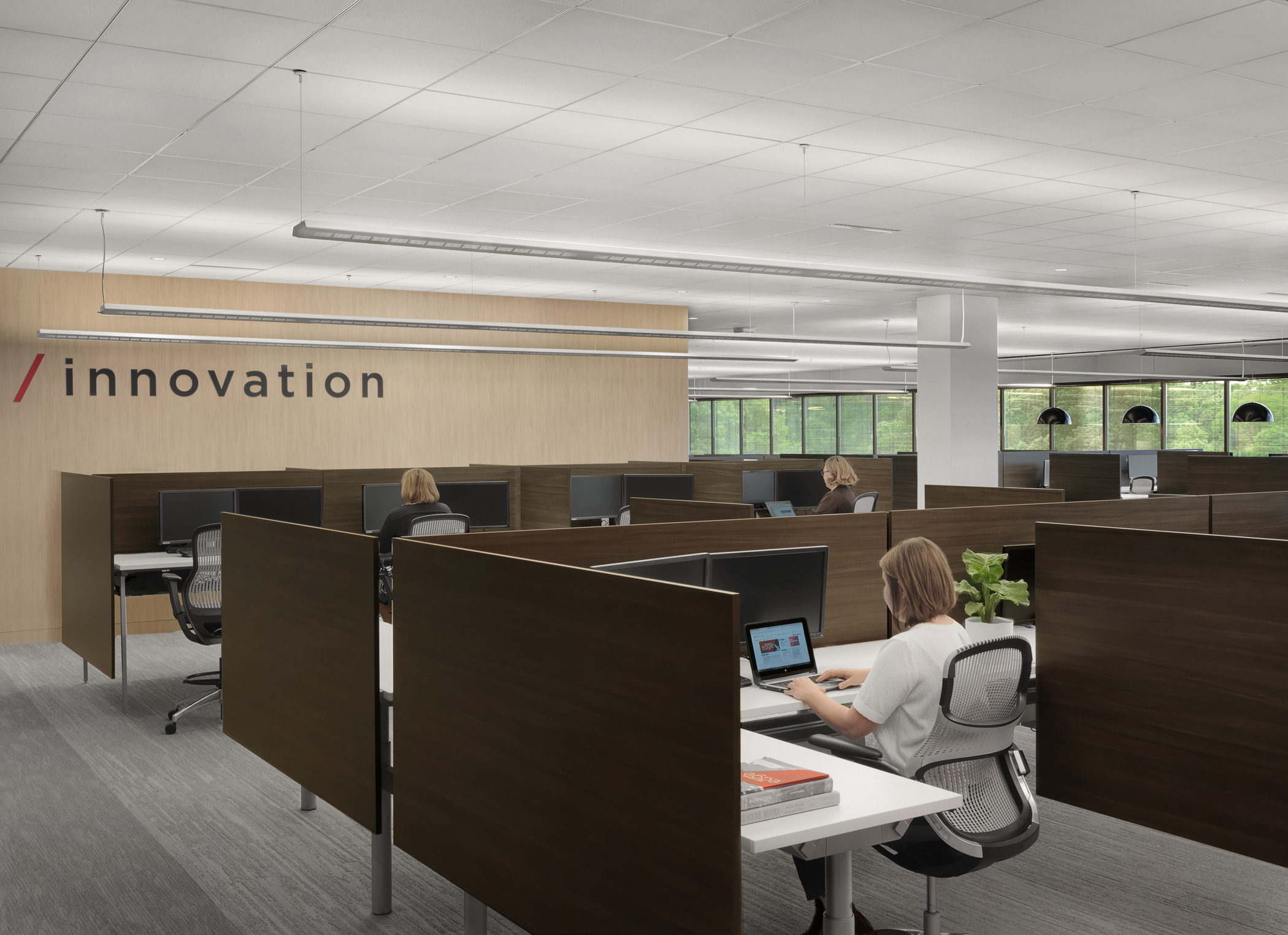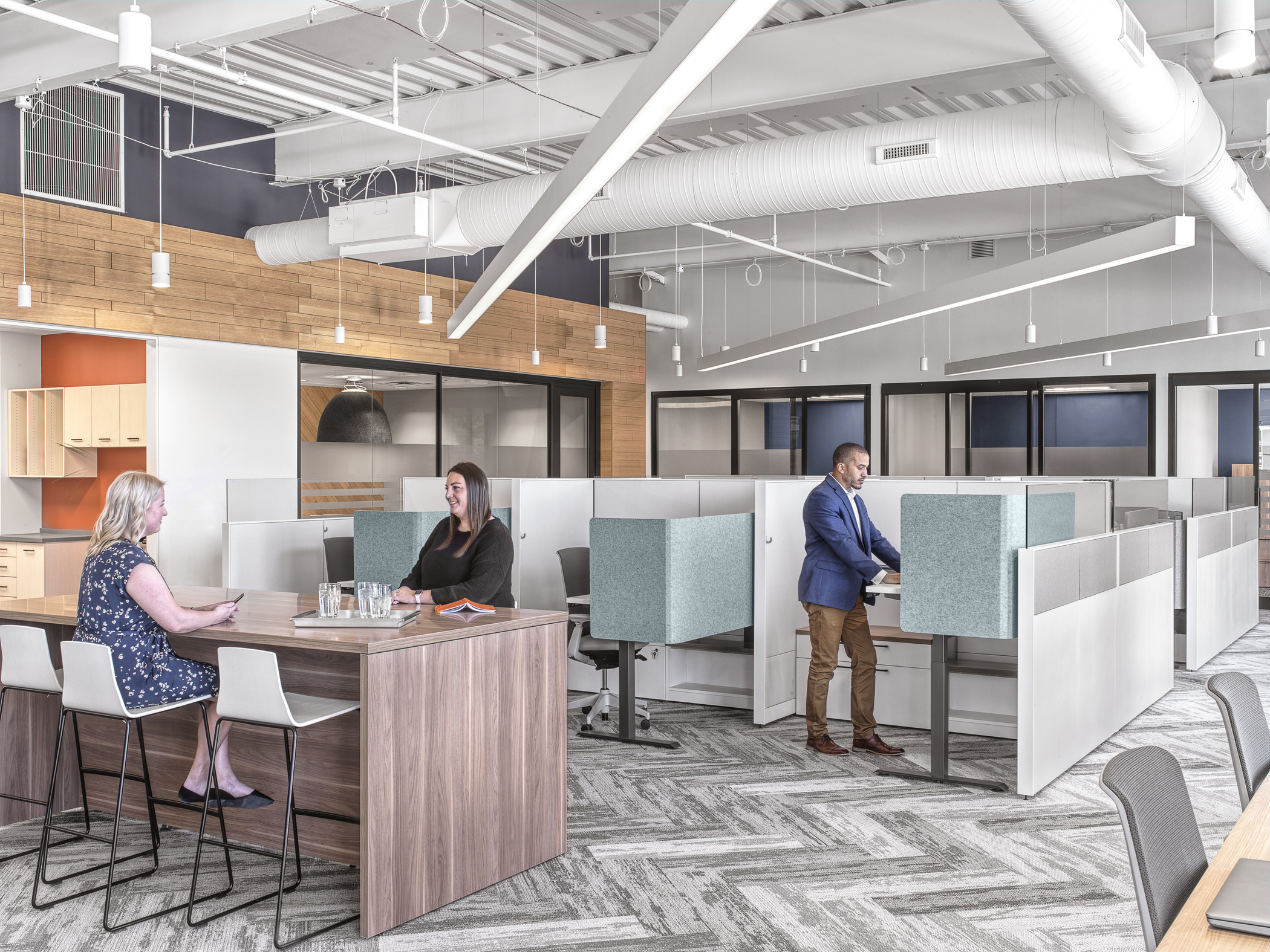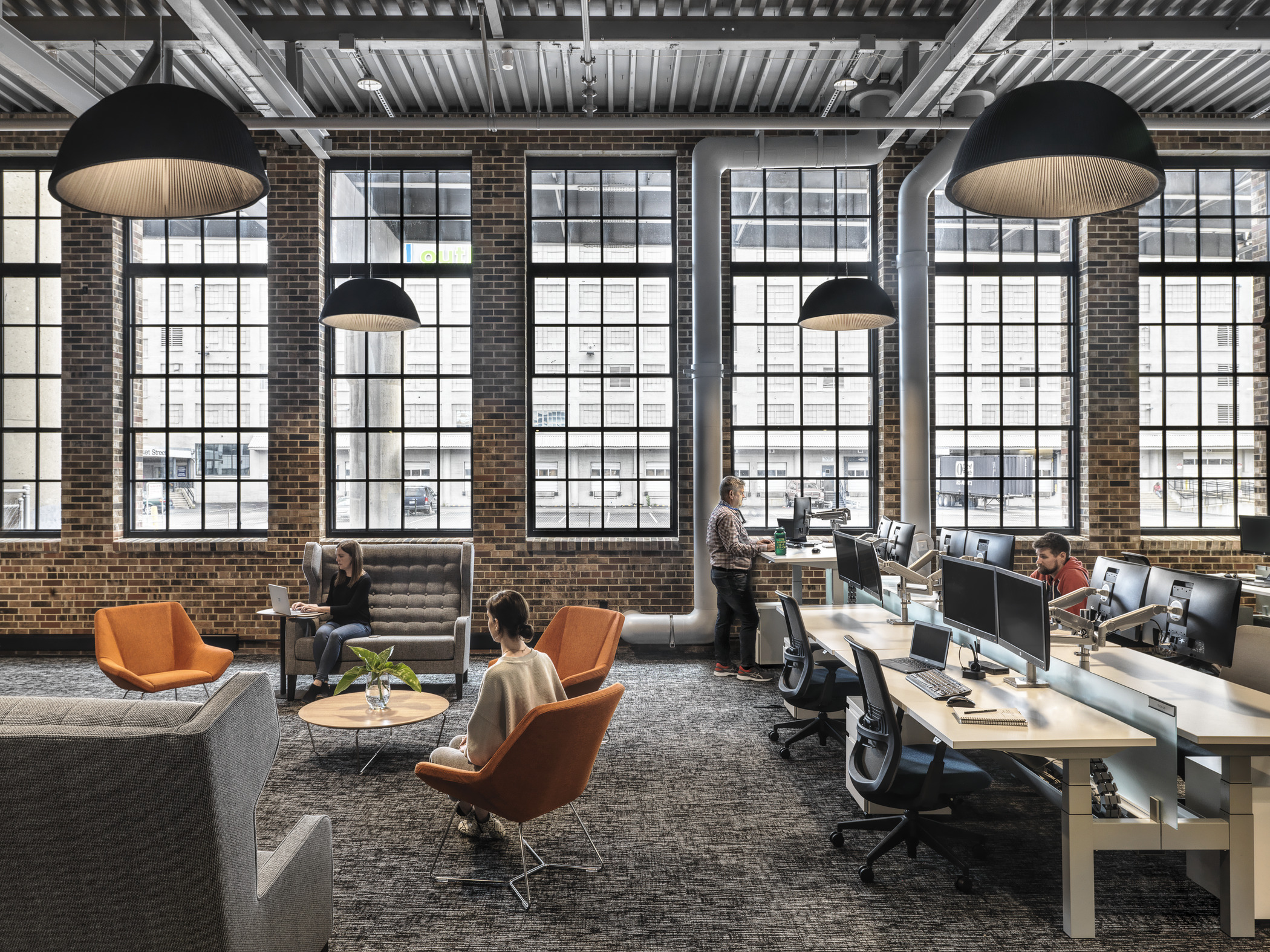In a post-pandemic shrinking office market, many companies are having similar conversations: “How much space do we need?”, “How do we bring employees into the office?”, and “How do we navigate the new world of remote and hybrid work?” The answer to all of those questions is when workplace designers such as myself enter the chat.
While assisting a national company that recently enlisted our workplace strategy services, I was struck by an obvious flaw in their current workplace: the deafening silence of their space. If you talk to the executives of this company, they will say the silence is because employees are choosing not to come into the office, and the space is empty. That may be partially true, but even workspaces that were fully occupied had this level of pin-drop-silence that made us visitors uncomfortable. One can only imagine what it must feel like for someone to be expected to work in that environment every single day.
Noise is a natural part of any shared space; however, the motions, thuds, squeaks, sighs, and conversations that you have by occupying part of a common space can sometimes be distracting to other employees. When you hear someone sneeze, it grabs your attention. When you hear someone constantly clear their throat, it breaks your concentration. When an employee next to you is having a phone conversation at a normal volume, you can often hear every word they’re saying. Our ears are naturally drawn to human speech, and we listen in to all that surrounds us. Maybe we’re loud typists, or maybe we’re slurpers when we drink or eat; regardless, people often become self-conscious that others could hear us, and that they could be annoyed by our actions.

Cubicle environments are among the most prevalent spaces for ambient noise to cause distraction – and they offer some of the best opportunities for design innovation.
Ambient noise and distractions are not new phenomena, but when we worked from home, workers were able to control our environment and limit some of these disruptions. Remote employees simply didn’t always have coworkers sitting next to them, and many got a little immune to filtering out pre-pandemic distractions. As we re-enter the workplace with the continual focus on in-office work, we’re collectively becoming tuned into everybody else’s noises once again and are hyper-focused on the fact that we also do these same things.
While it’s impossible to totally stop this kind of noise from occurring, there are plenty of ways to mitigate it – such as including the design of white noise into your space.

An increasing trend towards open-concept, mixed-use office space is perfect for white noise, allowing drastically different work setups to coexist with ease
One of the biggest amenities (and I almost call it a necessity) to any existing or new space is a white noise system. White noise systems create an ambient level of noise that helps to buffer speech and other noise that frequently fills a room. Generally speaking, such systems work by emitting a consistent sound (something in-between the buzz of an HVAC system, a fan, and analog TV fuzz) while operating. The frequencies of this sound help to mask the frequencies of most speech ranges. This noise helps to cover audible speech in an open space and make most words unintelligible – unless you are close to the speaker.
While I cannot endorse any specific brands, I can vouch for white noise being a low-cost option (generally less than $3.00/sf) that you can install during construction or at any point while you’re occupying a space. Are you wondering how a white noise system may sound like in your regular life? If you sleep with a ceiling fan on at night, turn the fan off for an evening – you’ll definitely notice the difference!

Large common spaces such as this are perhaps the ideal use case for white noise setups.
White noise systems in open office spaces, cafes, and other shared workspaces can help provide confidence that you can speak with some level of privacy. The systems also allow you to stay focused when others around you are speaking. These systems need to be designed and calibrated for each type and size of space. They can be mounted in open ceilings, acoustic ceilings, or drywall ceilings. Systems can be complex with multiple zones in a given space, and some even add music. If you currently work in a space that has white noise and it bothers you, that probably means it’s not tuned or calibrated correctly and needs to be adjusted. The best white noise systems are nearly indetectable.
Any shift in a company’s workplace strategy can be challenging. Navigating a return to the office when employees have been working from home for years can seem like a losing battle for executive teams. The overstimulation of an even sparsely populated workspace can be mentally taxing to those not used to it. Anything we can do as workplace strategists to help ease the stress of a shared workspace is an effort worth making. Distractions can lead to frustration, errors, and low engagement in the workplace. White noise systems are one small amenity to help colleagues share their space and clear the air.
